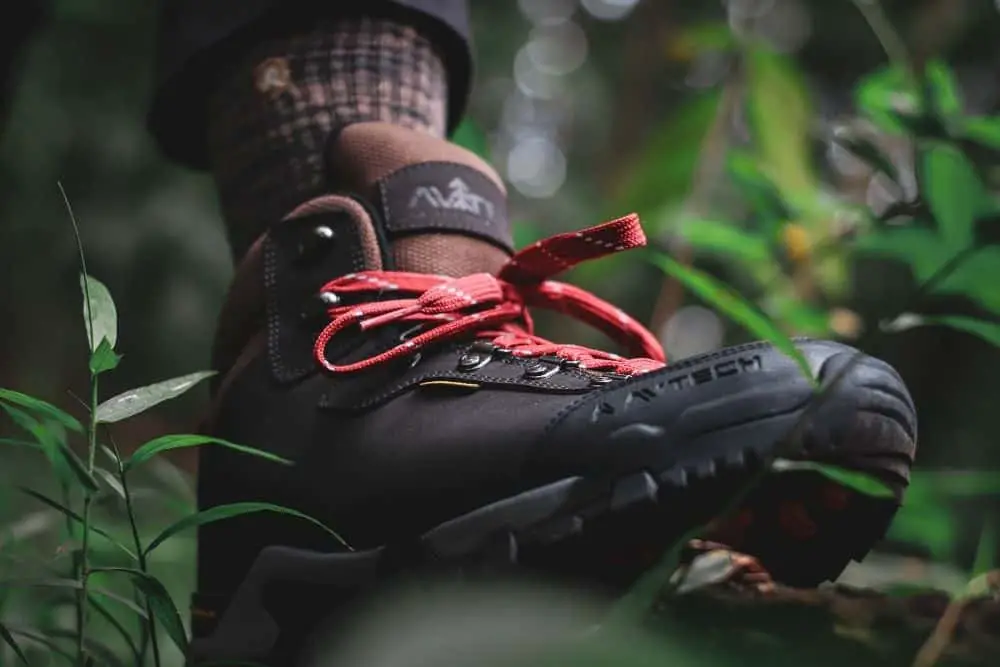We all know how sturdy, solid, and comfortable hiking boots can be. And because of this, they protect your feet, keep them warm and make every hiking adventure good for you.
However, one of the problems we have to deal with while using hiking boots is their stiffness, especially when they are pretty new. It makes you wonder if there is a need for hiking boots to be so stiff.
So, why do manufacturers have to design them to be so stiff? You may even be considering whether you should go for softer hiking boots. At the same time, you may be wondering what you can do to break them in.
But, again, you don’t have to worry too much. We have the answers to the question on your mind. We’ll also list some solutions to help you soften your stiff hiking boots.
Let’s get right into it.
Contents
- Why Are Hiking Boots So Stiff?
- What you shouldn’t do to soften your hiking boots
- Should Hiking Boots Be Stiff?
- Conclusion
Why Are Hiking Boots So Stiff?
There are many reasons why your hiking boots are stiff. While we are at it, we’ll mention some solutions you can try to help you break in your boots.
Reason 1: They are new
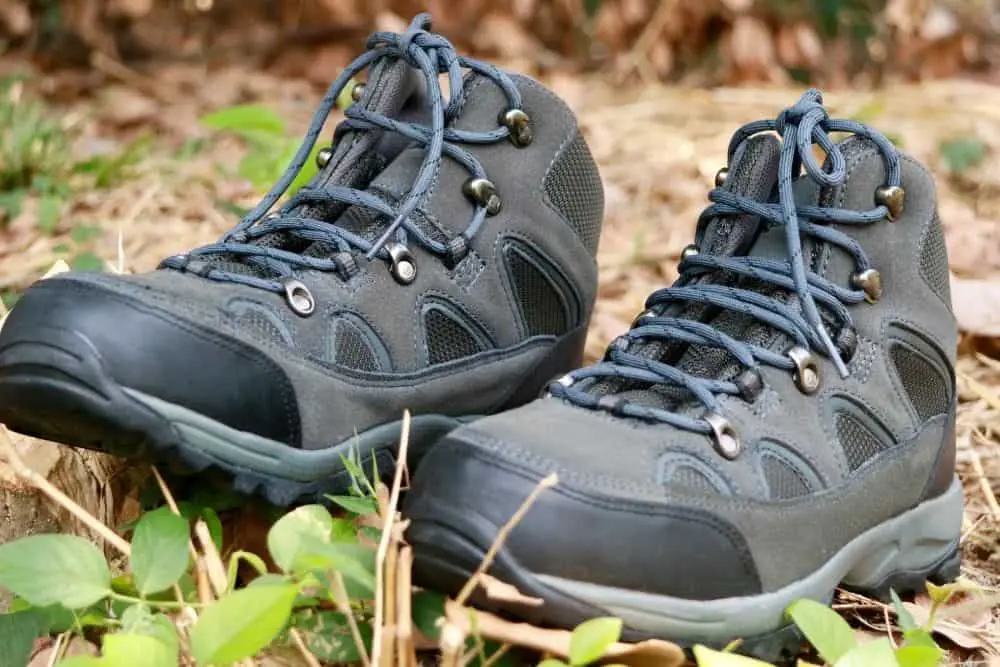
One of the reasons why your hiking boots are stiff is probably because you just got them. You don’t expect them to come stretched or soft.
You would probably return them and get your money back because they wouldn’t feel new. However, new shoes are usually stiffer than the old shoes in your collection because you have stretched them over time.
Does that mean you have to abandon them and not wear them? No, you don’t have to do that. That would defeat the reason why you bought it.
You shouldn’t try some weird methods you have seen online, too, like peeing on them or freezing them. That could mess them up.
We have a simple solution that you can try to soften your new hiking boots before your next hiking
Solution: Wearing them around your home
It may not be so easy wearing your hiking boots in your home, especially when you don’t like putting on shoes in your home. However, you’ll need to make a little sacrifice for your comfort.
The more you wear your boots, the more they stretch. So, wear them when you are having dinner, watching TV, or cooking. That way, they can flex when your feet move in them. Plus, the sole and the upper part of the boot will stretch as well.
If after you have tried this method, and it still feels tight, it’s because you probably didn’t buy your size. You can then return the boots to where you got them since they are still new.
Reason 2: They are too tight
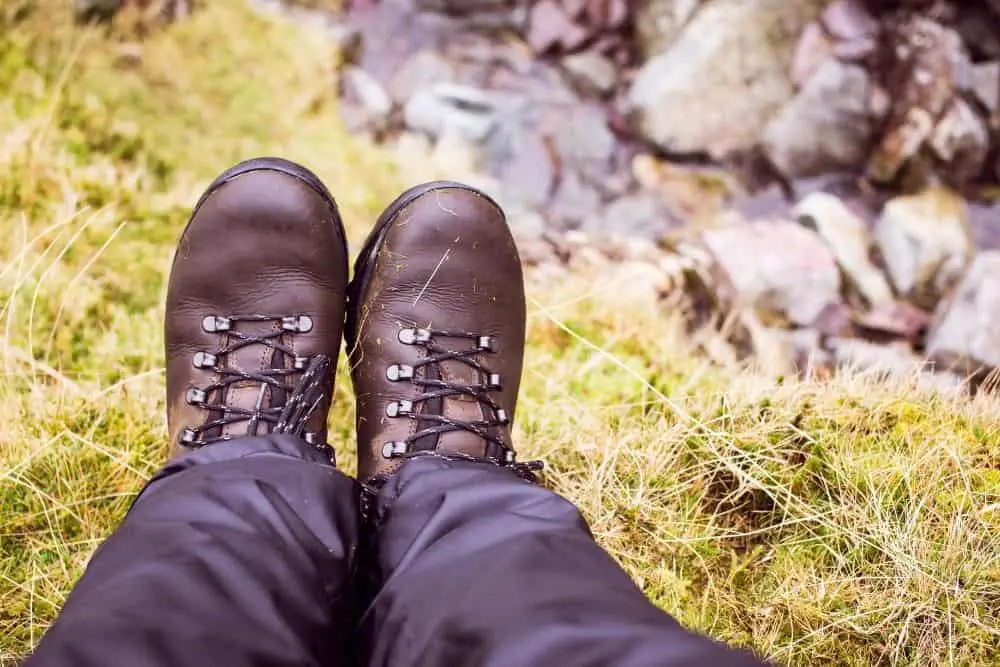
Another reason why your hiking boots are probably stiff is that they are super tight. You probably bought them thinking they would fit right well, but they make your feet feel cramped when you wear them, especially with thick socks.
One annoying thing you can experience while hiking is enduring pain because your boots are tight. What should you do to make them better?
You shouldn’t attempt to give them to someone with a bigger size to stretch for you. The person may end up overstretching them and make them too big for you.
At the same time, you don’t want to give them up since you probably got them at a high price. So we have a solution for you.
Solution: Flex the shoe
You can loosen the tightness when you flex the tight area. Stretch the width, boot tops, sole, length, and other regions.
Another way you can stretch them is by wearing them or using a stretching tool. You can get plastic or wood boot stretchers to widen the boots to the size you want.
Also, you can stuff the boots with different things, like newspapers, clothes, etc. That way, the stiffness will reduce.
Additionally, you can try an alternative option to take them to a shoe repairer around you to help you stretch them.
Here are some boot stretcher and boot stretch spray you might want to consider:
Last update on 2023-11-10 / Affiliate links / Images from Amazon Product Advertising API
Reason 3: The boot upper is tight
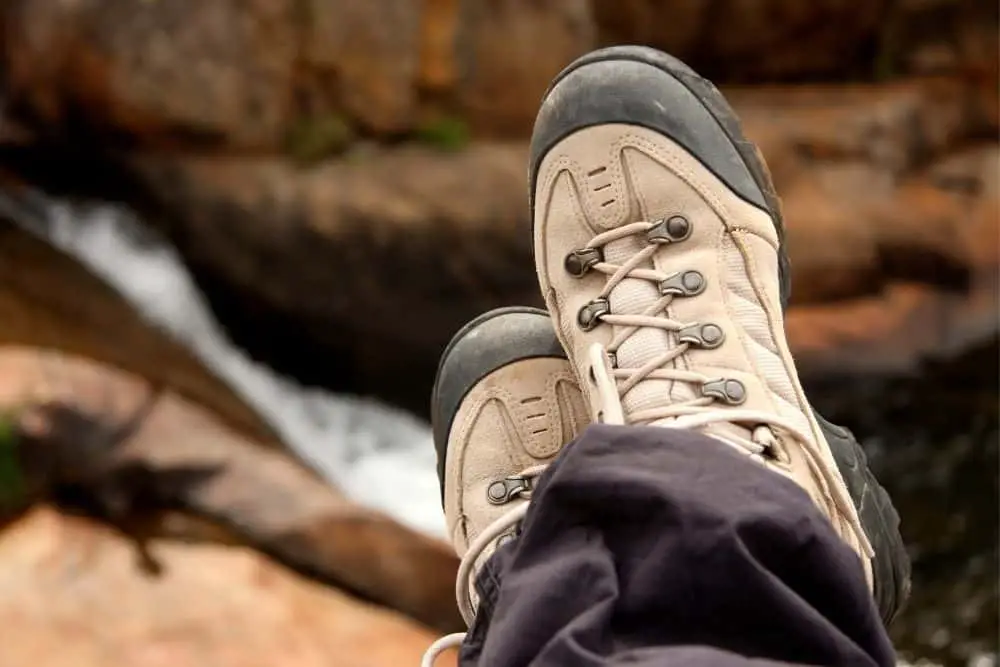
When the boot upper is tight, your hiking boots might feel stiff when you walk in them. Additionally, you may find it challenging to get your feet to enter the boots because the tops are too tight.
How do you make them comfortable to put on without harming your feet?
Solution: Stretch the boot top
You may need to give your boots to a professional shoe repairman to fix the stiff tops.
When looking for a professional to help you out, ensure you ask them if they have boot shaft stretching equipment.
The repairer would know what to do with your boots. They may also need to add panels of leather or elastic so it can stretch more.
Actually, if you want to fix them on your own, you can stretch the instep of your boots by using boot stretcher.
Last update on 2023-11-10 / Affiliate links / Images from Amazon Product Advertising API
Reason 4: Hardened hiking boots’ side seam
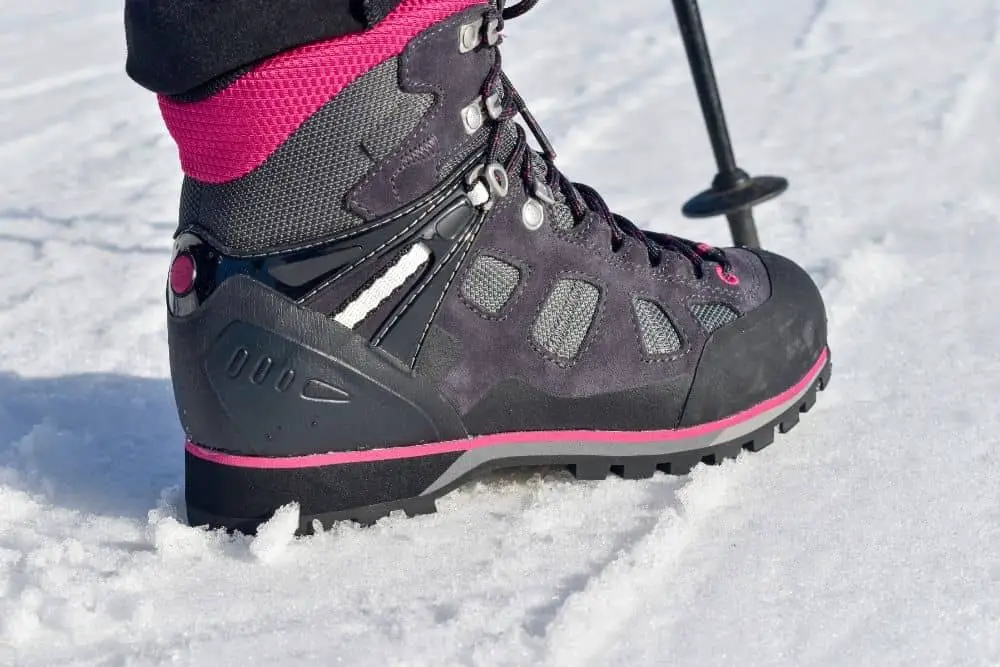
Your hiking boots could also be stiff because the seams rub your ankles. This could result in your ankles bruising or hurting.
You have probably had blisters on different hiking occasions from your ankles running in your boots for too long. What should you do to make the boots less stiff while still protecting your ankles at the same time?
Solution: Tape the spots
You may need to tape the spots where you feel rubs against the boots. Also, since walking in your hiking boots can help stretch them a little, you need to protect your ankles from blisters when walking.
You can tape your feet with surgical or sports tape, so your ankles don’t rub against the boots. That way, you can protect your feet and, at the same time, break in your hiking boots.
Reason 5: The boot material is stiff
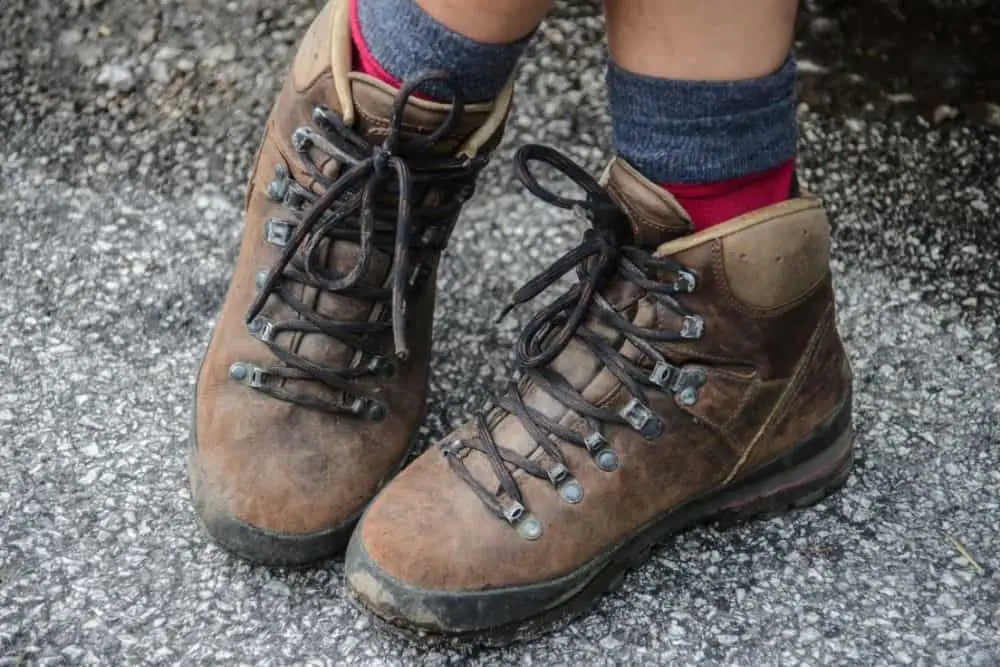
Your hiking boots could be stiff because of the material. Some materials are tougher than others, making the break-in time longer.
For instance, synthetic hiking boots break in faster than leather hiking boots. Therefore, you should note that there are different materials, and their break-in time differs.
For instance, full-grain and nubuck leather take longer to break in than split-grain leather. So, you may need to stretch your boots a little bit before you can wear them for extended trips.
Solution: Flex the leather
Here’s the truth; leather stretches with time. The more you work with them, the higher chance they have to break in. You can wear them for a walk around the block or around your home – the leather stretches faster that way.
For mountaineering boots made with leathers like full-grain, you can soften them faster when you add wax to them. Then, the wax manipulates the leather to relax a little bit.
You can then massage the wax into strategic points in the boots, like the ankle and toe areas. After that, you would need to hold the boots in your hands and flex them as much as you want.
Doing that will also help soften your hiking boots soles. It makes almost no difference if the leather is soft when the sole is still stiff. In the end, you’ll end up with stiff boots, and that could make your heels hurt.
Other general solutions to break in your stiff hiking boots
There are more solutions you can try to soften your stiff hiking boots. They are:
Go heavy backpacking in them

Since you can soften your stiff hiking books when you walk around your block or home, you can go a little bit extra through heavy backpacking. The longer you wear your boots, the better it is if you want them to stretch faster.
Also, the weight you’ll lean on them will make them stretch. You may, however, feel some discomfort when you’re hiking. Therefore, we recommend that you have something less stiff in your backpack, like spare trail shoes. So, you can wear them when your feet hurt in hiking boots.
Apply lotion to them
Hiking boots could use a little amount of moisture to soften them. Of course, a small amount of lotion isn’t harmful to your leather boots since they also moisturize your skin.
However, you should be cautious when you apply lotion to them. Since the cream isn’t a special product made specifically for the boot, you should use only a small amount at a time.
Afterward, check how your boots react to it, then you can decide if you should keep applying it on your boots or not. Additionally, some unique leather products, like neatsfoot oil or mink oil, can help relax your hiking boots.
- Protect and lengthen the life of your boots with our specialty made in the USA care products,...
- Style No. 97105
- Protect and lengthen the life of your boots with our specialty made in the USA care products,...
Last update on 2023-11-11 / Affiliate links / Images from Amazon Product Advertising API
These special oils help soften your hiking boots, and at the same time, help nourish the leather material.
Apply the oil on your boots and leave them to dry so the leather absorbs it. Additionally, you could brush the oil into the leather to make it absorb faster.
Use leather conditioner
Besides lotion, there is a specialized product for leather boots that you can use to soften your hiking boots – a leather conditioner.
- Powerful leather conditioner: Leather Honey penetrates deep to protect new leather and rejuvenate...
- Restore all types/colors of leather: Soften leather furniture, moisturize leather car interiors &...
- Family-owned, American made, specifically formulated: For over 50 years, we have been making the...
Last update on 2023-11-10 / Affiliate links / Images from Amazon Product Advertising API
If your hiking boots are too stiff, clean them and apply leather conditioner to the boot surface. Then wait for conditioner to penetrate deep into the leather.
Conditioner will moisturize your hiking boots, making them softer and more comfortable to you.
Relax your boot with alcohol

You could also soften your hiking boots when you spray alcohol on them. Why? Alcohol can help stretch and relax your hiking boots’ stiffness.
Add alcohol to a spray bottle and spray it all over the boots. However, you might also want to note that alcohol can discolor your leather hiking boots when applied to them, continuously.
Stuff a damp, warm towel in them
Your hiking boots could use a little steam to relax their stiffness. Dip your towel into warm water, then wring the water out of it.
Don’t make the mistake of stuffing the towel in the boots dripping wet. You only need the dampness and the warmth the towel will give to the boots.
The dampness and warmth will make the hiking boots’ materials softer. You can try this up to three times to see the results.
What you shouldn’t do to soften your hiking boots
You might have read about different ways you can flex your stiff hiking boots online. Unfortunately, some of these ways are unfit and may ruin your hiking boots faster than you think.
You shouldn’t:
1. Put your hiking boots in the freezer

Some people suggest that you do this so they can soften quickly. You may be thinking that that would help, but it could make your boots split.
Also, you shouldn’t put water bags in them so they can freeze and stretch the boots. You may end up over-expanding them so that they become too loose for you, or worse, they split, and you can’t wear them anymore.
2. Heat them with hair dryers
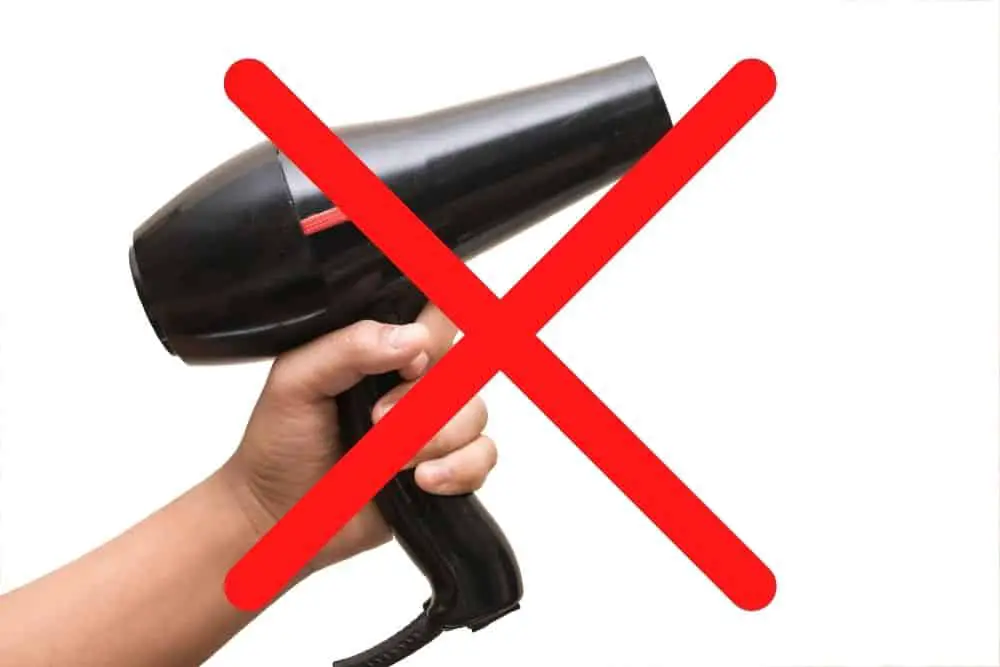
You may think that would soften the material, but you could, in the process, melt the glue holding your boots together. Also, heating them with a hairdryer could make the boots dry and brittle.
3. Soak them inside water
You shouldn’t also try to wear the boots while they are wet either. The reason is that they could become too soft that they’ll lose their natural oils, moisture and become brittle when they get dry.
4. Pee in your hiking boots
You may have heard of how soldiers have used this method to break in their boots. However, you shouldn’t try this because it’ll make your boots stink, and urine contains minerals that can damage leather, making it dry.
5. Lend your boots to someone with bigger feet
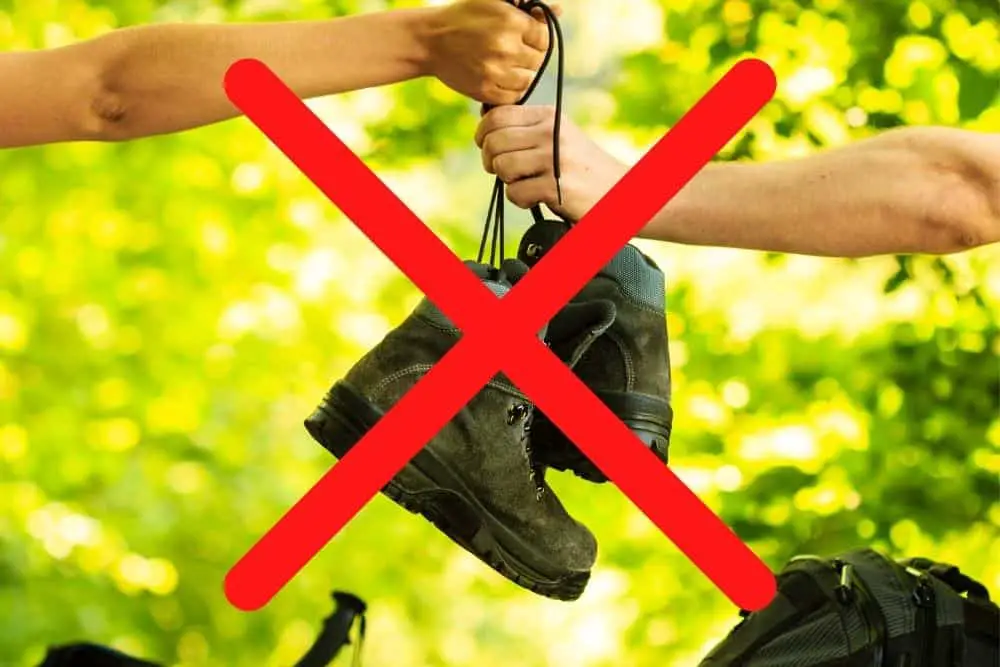
This is because your boot may mold around the person’s feet, and they may not fit you properly anymore.
Should Hiking Boots Be Stiff?
You’re probably wondering if you need to go through the stress or relax your stiff boots in the first place. So why do manufacturers have to make them that stiff?
You may be surprised to know that they are stiff for some reasons that benefit you. So let’s move on to discuss the pros and cons of stiff hiking boots.
Pros
1. To help support your ankle
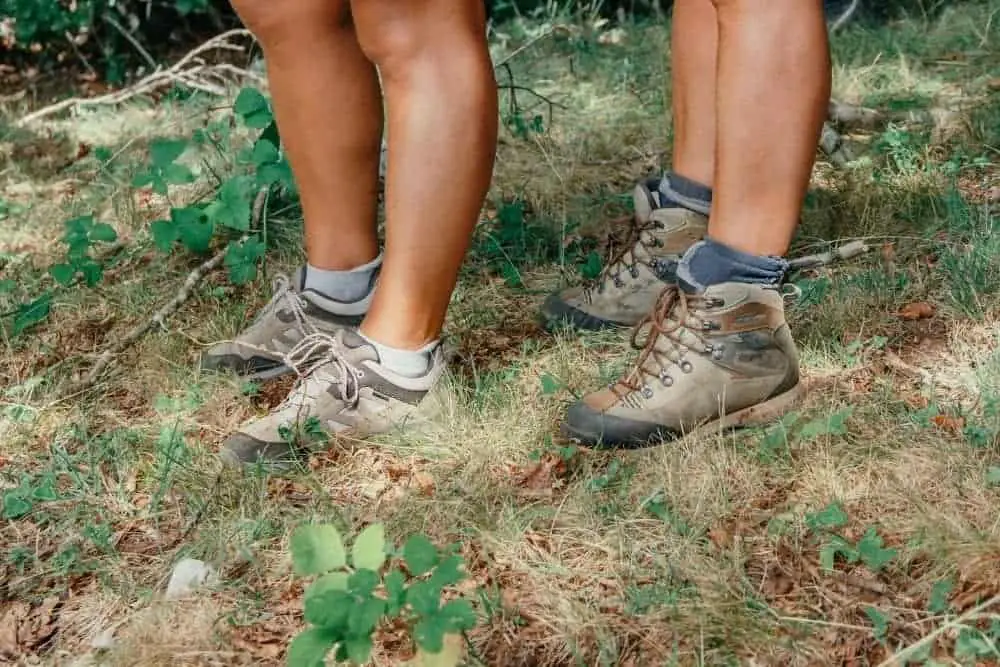
You might have been thinking that the height of the top of your hiking boots protects your ankles. The truth is, the boot’s stiffness supports your ankle when you are hiking.
The stiffer the hiking boot is, the more support they give your ankle. They protect you from falling or spraining your ankle when you are hiking.
For instance, stiff hiking boots have internal support to give extra protection to your feet. In addition, manufacturers stick shanks about 3 to 5mm thick between the midsoles and outsole to make the boots stiffer.
Also, they add plates below the shanks to balance the feet and protect them from hurting when you walk over uneven rocky terrains.
Therefore, they are fit for mountaineering or heavy backpacking, or longer hiking durations because they’ll support your weight all through.
2. More durable compared to soft boot
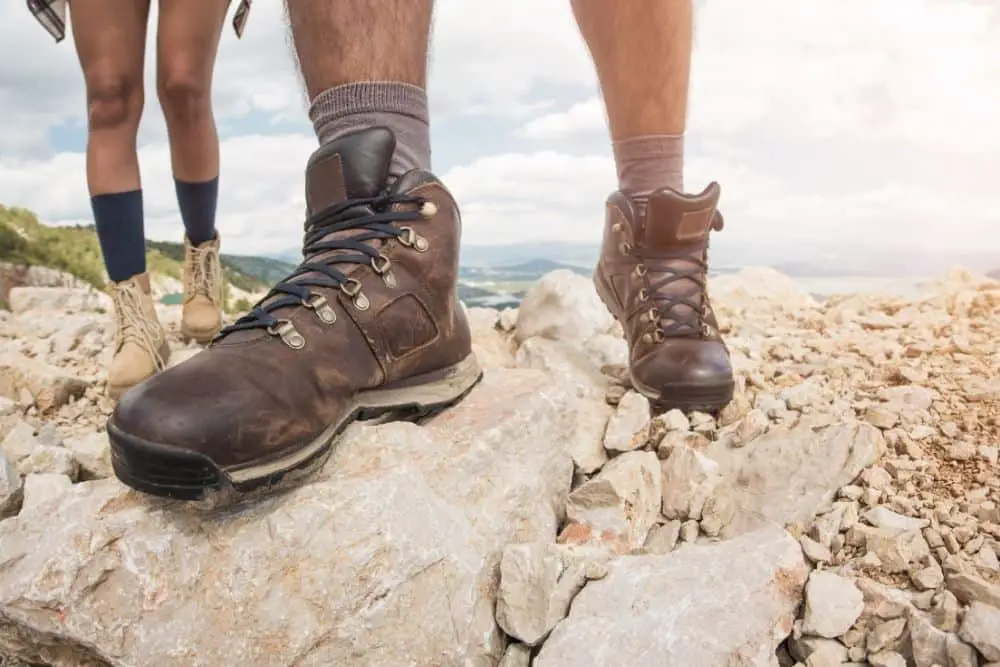
Stiff hiking boots are more durable than soft hiking boots. For instance, stiff hiking boots have midsoles made of polyurethane (PU), and they tend to last longer and can work properly on tough hiking terrains.
On the other hand, manufacturers make soft boots from ethylene-vinyl acetate (EVA), which are more lightweight and suitable for light or relaxing hiking adventures.
3. They’re suitable for different terrains
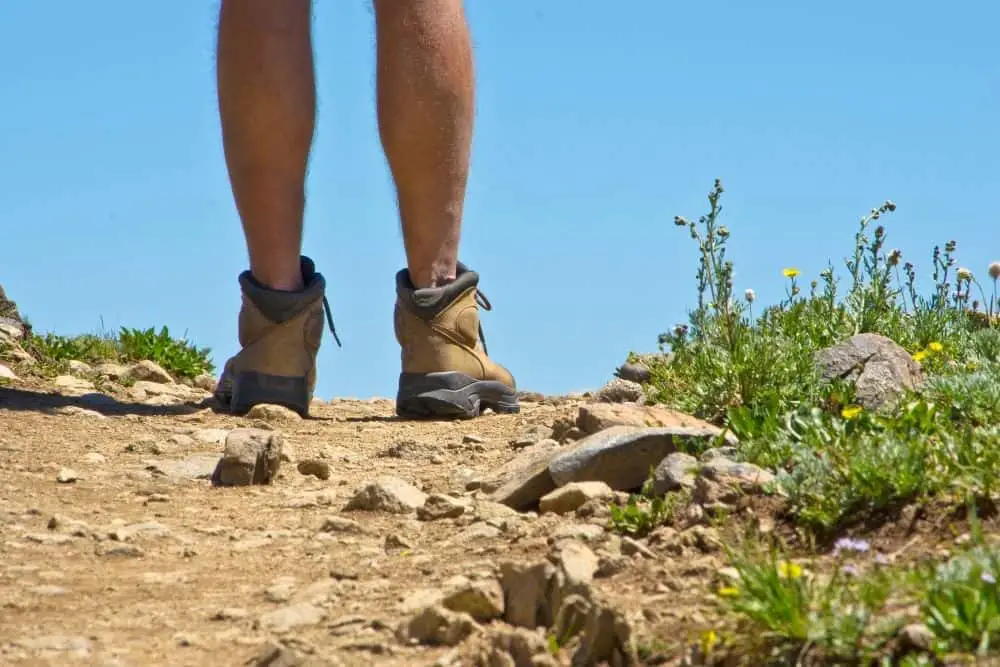
If you think softer boots make you slip on rocky or uneven terrains, try stiff hiking boots. They are sturdy and solid, so they keep your fit firmly rooted to the ground.
In addition, they make your foot feel firm such that it builds your confidence to hike the difficult terrain you might’ve been dreading.
Cons
1. Too stiff
What more could be a turnoff than their stiffness? While others may see it as a benefit and good feature, others would rather hike in comfortable shoes.
2. They take longer to break-in
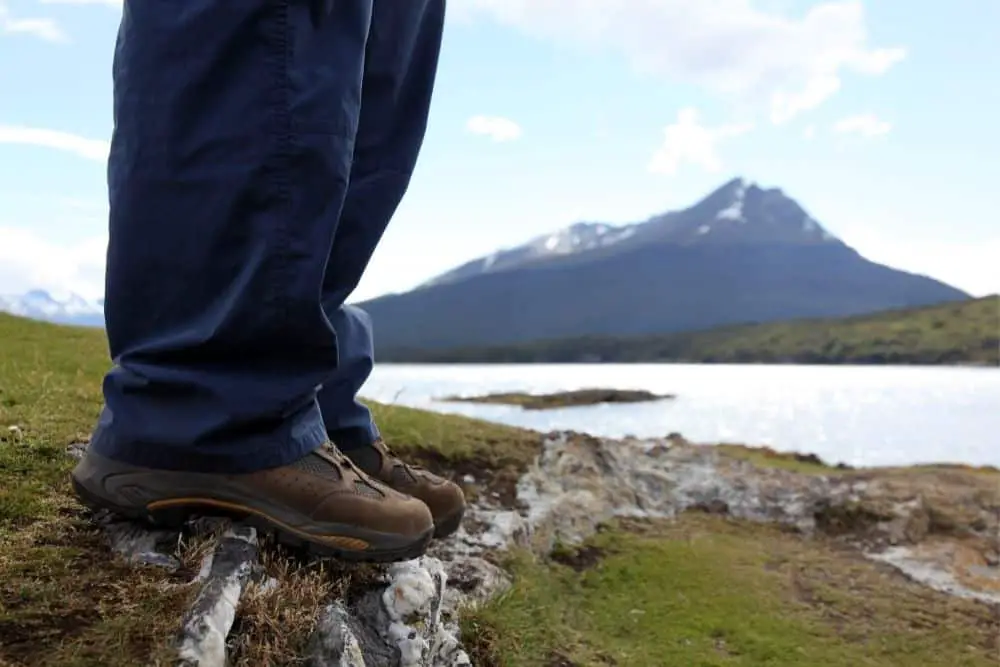
Another con is that you have to try different methods to make them softer. However, this depends on the kind of material they are.
For instance, synthetic materials are easy to break into, while full-grain leather has a longer break-in period. A long break-in period may result in several blisters, corns, scratches and even Plantar fasciitis symptoms.
3. They are heavy
Generally, hiking boots are bulky. So, you also have to deal with their weight and, at the same time, stiffness. However, you have the option of going for other lightweight hiking boots.
4. Some are less breathable

Although there are many breathable hiking boots, some stiff hiking boots can have less of this feature because of their build.
Conclusion
There are many reasons why your hiking boots can be stiff. And this article discussed why your hiking boots are stiff and some solutions you can try to stretch and relax them.
Also, we talked about things you shouldn’t do to stretch your hiking boots. Furthermore, we highlighted why hiking boots should be stiff and the downsides to stiff hiking boots.
In the end, you can choose to stretch your stiff hiking boots or not with the solutions we listed. You may decide to go for more comfortable hiking boots that won’t require too much effort from you to stretch.
Related post: How To Stretch Toe Box of Hiking Boots?

